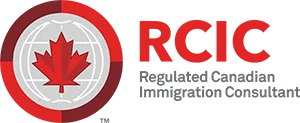Expert Strategies from Navio Immigration Consultants You Need to Know to Successfully Immigrate to Canada
Table of contents
- Introduction
- Understanding Canadian Immigration Programs
- Our expert process to assess your eligibility for immigration to Canada
- Challenges you may face along your Canadian immigration journey
- Expert tips to consider for successfully immigrating to Canada
Introduction
Canada has long been a top destination for those considering immigrating to a new country. About 25% of Canadians have immigrated to the country, the highest among G7 nations. From its quality of life, economic opportunities, political stability, and natural beauty to educational opportunities, social services, or healthcare systems, immigrating to Canada has a lot to offer newcomers.
If you’re considering immigrating to Canada this year, you’ve probably already studied Immigration, Refugees and Citizenship Canada’s (IRCC) website. The official Government of Canada website is a great place to start exploring Canada’s immigration programs, eligibility requirements, and processes. However, you won’t find much in the way of strategic advice essential to helping you navigate Canada’s immigration systems successfully.
This blog describes strategies our immigration consultants are using to help our clients succeed in 2024. We hope you’ll find value in these strategies as you navigate your immigration journey!
Understanding Canadian Immigration Programs
Canada’s immigration programs are organized into four main categories:
- Family Reunification
- Economic Immigration
- Humanitarian and Compassionate Grounds
- and Refugees and Protected Persons.
Roughly 60% of new permanent residents in Canada immigrate through economic programs each year.
In general, people immigrating through economic programs must have a combination of education, English or French language ability, and work experience that meets the requirements of a federal or provincial immigration program. You can apply for permanent residence from inside or outside Canada. In some cases, you don’t even need to have ever set foot in Canada before applying to become a permanent resident, although work experience and/or previous studies in Canada are beneficial to your ability to succeed.
Alternatively, individuals with a qualifying relationship to a Canadian citizen or permanent resident may be sponsored in the Family Class. If you’re applying in this category, you do not need to meet education, work experience, or language requirements. Financial requirements apply in some cases. Applications to sponsor parents and grandparents are by invitation only. The applications to sponsor other family members are accepted on a rolling basis.
Our expert process to assess your eligibility for immigration to Canada
Our immigration consultants assess someone’s eligibility for immigration to Canada using a strategic and systematic process of elimination, starting with evaluating someone’s eligibility to apply for permanent residency in the Express Entry system. The Express Entry system is the fastest pathway to permanent residence but not everyone will qualify. And not all qualified applicants will be able to apply through this system.
You can evaluate your eligibility for Canadian permanent residency using the same technique as our consultants by following the steps below:
Step 1:
Do you have a spouse or common-law partner who is a Canadian citizen or permanent resident? If yes, you may be eligible to apply in the Family Class.
Considerations
- You might want to still consider economic programs even if you’re eligible to apply in the Family Class. Some economic programs are faster, and you may prefer not to have the added layer of immigration put pressure on your relationship.

Continue to the next step if you don’t qualify in the Family Class or if you do qualify and want to explore other programs.
Step 2:
Do you meet the eligibility criteria of at least one Express Entry program? In most cases, if you don’t have a post-secondary education of at least 3 years, it’s unlikely you will be able to successfully apply through Express Entry, even if you meet the eligibility requirements of one of the Express Entry programs.
Considerations
- Express Entry is a system that manages applications for permanent residence in the following programs:
- Canadian Experience Class (CEC)
- Federal Skilled Trades Program (FST)
- Federal Skilled Worker Program (FSW)
- Provincial Nominee Programs (Express Entry/Enhanced PNP only)
- You can apply to the Federal Skilled Trades and Federal Skilled Worker Program without ever having worked in Canada (FST applicants must have a valid job offer or Red Seal. Obtaining a Red Seal certificate might require a trip to Canada to complete necessary exams).
- CEC applicants must have a year of skilled work experience in Canada in the past 3 years but do not need to be in Canada at the time of application.
- Applications through the Express Entry system are accepted by invitation only. Candidates are awarded points based on their qualifications and the candidates with the highest score are invited to apply.
Continue to Step 3a if you qualify for one of the Express Entry programs.
Continue to Step 4 if you do not qualify for one of the Express Entry programs.
Step 3a:
If you’re eligible under one of the Express Entry programs, is your Express Entry score high enough that you likely obtain the invitation to apply?
Considerations
- Use the Comprehensive Ranking System to calculate your score.
- Once you’ve calculated your score, review the most recent rounds of invitations to determine if your score is equal to or greater than the cutoff in the most recent rounds of invitations.
- Make sure you only compare your score against rounds of invitation in which you are eligible to be invited. For example, IRCC issues invitations in special rounds for provincial nominees, people with work experience in certain occupations, and people with French language ability.
If you have a competitive Express Entry score, gather your supporting documents, create a profile, and wait for your invitation to apply!

Continue to step 3b if your score is too low.
Step 3b:
Consider ways you might increase your Express Entry rank. These include:
- Obtaining an Education Credential Assessment (ECA), even if it’s not required to be eligible (i.e. CEC applicants aren’t required to provide one but doing so is almost always necessary to get invited to apply)
- Retaking the language test if you scored less than Canadian Language Benchmark (CLB) 10 in any area.
- Providing language tests in both official languages
- Accumulating more skilled work experience in Canada
- Accumulating more skilled work experience abroad (if you have less than 3 years in the past 10 years)
- You will be awarded points for your spouse or common-law partner’s qualifications if you provide the results of their language test, their ECA, and details of their skilled work experience in Canada (if they have any)
- Securing a job offer from a Canadian employer, either with a Labour Market Impact Assessment (LMIA) or through the International Mobility Program (IMP).
- Getting nominated by a Provincial Nominee Program.
Step 4:
You can still apply for permanent residency even if you’re not eligible to apply through Express Entry. Each province and territory has its program to select candidates for permanent residency that addresses the specific needs of the province/territory.
Becoming a provincial nominee is also a way to increase your Express Entry points, if you qualify but don’t have a high enough score to receive an invitation to apply.
Explore the different programs in each province. Some programs require previous work or study in the province/territory to apply, while most require a job offer from an employer located in the province/territory. Some PNP categories don’t require a job offer or previous work or study in the province or territory.
Start by determining where you intend to settle in Canada, then explore the programs on each provincial or territorial website.
Challenges you may face along your Canadian immigration journey
Canada has increased annual permanent residence immigration targets to historical heights. Concurrently, the demand for immigration to Canada has soared. This means you need to be more strategic than ever in your approach to immigrating to Canada.
The number of temporary residents (students, workers, and visitors) admitted to Canada each year is unlimited. In 2022, IRCC welcomed over 4 million temporary residents, of which 550,187 were students and 604,382 were workers. By contrast, 437, 539 permanent residents were welcomed to the country in the same year, of which just under 30% were previous study or work permit holders. Increasing demand for Canadian immigration programs drives up the number of points required to get invited to federal and provincial programs.
You will be in increasingly strict competition with other candidates. Your success might require gaining more work experience, pursuing further education, learning a new language, or making career changes.
The following tips from Navio immigration consultants will help you strategically plan your immigration journey and prepare your application successfully.
Expert tips to consider for successfully immigrating to Canada
1. You might have a claim to Canadian Citizenship?
You might be eligible to apply for citizenship directly if you were born outside Canada to Canadian parents. If this is the case, you don’t need to apply for permanent residence!
A recent court decision (Bjorkquist et al. v. Attorney General of Canada if you’re a legal geek like us) deemed the “first-generation born outside Canada” restriction on the right to citizenship violates the Charter of Rights and Freedoms. IRCC has been ordered to make changes to the Citizenship Act within 6 months (the decision was rendered by Justice Jasmine Akbarali on December 19, 2023).
This may open a direct path to citizenship for those born outside Canada to Canadian citizens who were also born outside Canada once the eligibility criteria are changed by IRCC.
This is an ongoing development; IRCC still has time to appeal the decision and the specific changes to be made aren’t defined yet. However, there’s hope for you if your parents are Canadian citizens and you are the second generation born outside Canada.

2. Carefully select your National Occupation Classification (NOC) code
Carefully and expertly selecting your NOC code is crucial to your success. Whether you’re applying through Express Entry or a Provincial Nominee Program, your eligibility and chance of success hinge directly on choosing the correct NOC code.
You can search the NOC by job title. We also recommend exploring the entire NOC structure. Reviewing the NOC structure will help you find less obvious job titles and explore similar categories. You might find that a search of your job title doesn’t bring up any results. For example, try searching restaurant supervisor – no results! Instead, you’ll find it under the Food Service Supervisor. A job title search might not include all related, and possibly more appropriate, NOC codes. For example, a search of a ski instructor only brings up NOC 54100 (a low-skilled occupation) but someone who is an instructor might be more accurately classified as a coach (a high skilled occupation) depending on the exact nature of their duties and responsibilities.
Analyze different NOC codes. Pay attention to the lead statement and main duties and choose the best NOC based on the description that most closely matches your duties and responsibilities. This doesn’t necessarily mean you will choose the NOC with the matching job title. Focus more on the lead statement and duties rather than the job title. Remember, your employer (past and current) likely isn’t a Canadian immigration expert and didn’t choose the job title based on their evaluation of the Canadian NOC system.
Selecting the best, most accurate NOC code is a critical step in your success, because the more skilled work experience you have (Express Entry) and, in some cases, the more directly related work experience, meaning the same NOC code, you have (PNP), the more likely you are to qualify and receive enough points to be invited to apply.
3. Consider Relocating
Already in Canada? If you’re living and working in a province that requires an ITA and don’t have enough points, you might consider exploring other provinces and territories without an ITA system.
Different provincial nominee programs have different requirements and processes. Some provinces accept most applications by invitation only. Other provinces accept applications in certain categories on a first-come, first-served basis. Below is a list of provinces and territories that don’t require an invitation to apply for skilled workers:
- Alberta
- Saskatchewan
- Nova Scotia
- Newfoundland and Labrador
- Yukon
- Northwest Territories
4. Accumulate more work experience
Do you lack at least a year of skilled work experience inside and outside Canada? For example, did you come to Canada as an international student to complete your undergraduate degree before having the chance to gain professional work experience? In some cases, leaving Canada to acquire at least a year of full-time, skilled work experience might be beneficial. A single year of foreign work experience, skilled of course, can increase your score as much as 50 points!
You’ll max out on points for foreign work experience when you accumulate a total of 3 years, of skilled work experience in the past 10 years. The experience doesn’t need to be continuous, nor does it need to be in the same occupation, so it might not even take you a year to accumulate enough experience to get more points if you had less than a year of skilled experience before coming to Canada.
Be aware that, if you reach 30 years old, you’ll start to lose points (5 points/year) so carefully weigh the pros and cons of this strategy based on how far out it will push your potential application date. Other strategies might be more appropriate if you’re nearing 30.
5. Consider a career change
IRCC and PNPs are targeting specific occupations, mostly STEM, medical professionals, and trades. We’ve met many people who have come to Canada with experience in these occupations and shifted to different industries upon arrival in Canada. We acknowledge the difficulties inherent in working in certain occupations, especially regulated professions, and don’t make this suggestion lightly. However, gaining work experience in in-demand occupations, especially if you have previous experience in one of these occupations, can be highly beneficial.
Many provinces have programs specifically targeting certain occupations and work experience in these occupations may make you eligible for immigration through another PNP category. These categories might be less competitive and/or you may be more likely to be invited to apply. For example, the BC PNP Entry Level and Semi-skilled stream requires 9 months of continuous, full-time work experience in an eligible occupation in TEER 4 or 5. Your profile might be much more competitive in this category than the skilled worker category.
6. Extend your work permit or study
Extending your work permit can be beneficial for several reasons. First, gaining more skilled work experience in Canada will increase your points in Express Entry and PNPs. Second, if you are working in Canada and eligible for an employer-specific work permit (note: we don’t exclusively mean LMIA!) you can accumulate more Express Entry points with a job offer from the employer listed on your work permit.
Here are different types of employer-specific work permit;
- Francophone mobility
- Intra-company transfer
- Free Trade Agreement
- IEC Young Professional (if you maxed out your participation, you can participate again on another passport – if you’re a dual citizen – or through a recognized organization designated by the IEC program)
- Labour Market Impact Assessment (LMIA)
- Significant benefit
You might also consider studying a post-secondary program in Canada. Completing an eligible program of study will increase your Express Entry points and often increase your PNP points in provinces with an invitation system. It can also open the door to other PNP categories specifically targeting international graduates. Selecting the right school, program, and location of study are important considerations to ensure you receive the maximum benefit of pursuing further education.
TL;DR
Immigrating to Canada is becoming increasingly competitive. Taking a strategic approach to your immigration journey is essential to success. Determining your eligibility and taking steps to improve your chance of success, like selecting the best NOC code, studying, accumulating more work experience in or outside Canada, changing jobs, securing a job offer or relocating/settling in a different province, are all necessary to becoming a permanent resident in 2024.
Written on January 8, 2024, by Brooke Finlay
